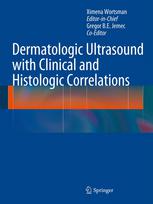

Most ebook files are in PDF format, so you can easily read them using various software such as Foxit Reader or directly on the Google Chrome browser.
Some ebook files are released by publishers in other formats such as .awz, .mobi, .epub, .fb2, etc. You may need to install specific software to read these formats on mobile/PC, such as Calibre.
Please read the tutorial at this link: https://ebookbell.com/faq
We offer FREE conversion to the popular formats you request; however, this may take some time. Therefore, right after payment, please email us, and we will try to provide the service as quickly as possible.
For some exceptional file formats or broken links (if any), please refrain from opening any disputes. Instead, email us first, and we will try to assist within a maximum of 6 hours.
EbookBell Team

4.0
76 reviewsSignificant technological advances have produced equipment that allows imaging of the skin with variable frequency ultrasound in previously unseen detail and provides a range of dynamic data that is currently unmatched by any other technology. Dermatologic Ultrasound with Clinical and Histologic Correlations is a comprehensive introduction to ultrasonography of the skin, nails, and scalp as it relates to the assessment and diagnosis of dermatologic diseases. It provides radiologists, sonographers, dermatologists, and physicians with interest in skin imagingwith a concise understanding of the diagnosis of dermatologic conditions through extensive high-resolution gray scale and color Doppler ultrasound images and presents classical correlations of clinical dermatologic lesions with sonographic and histologic findings. Featuring more than 1700 images, this text-atlas provides an excellent starting point in learning about this topic.
Featuring contributions from world-renowned authorities in the field of superficial ultrasound imaging, the book reviews the technical considerations relating to color Doppler ultrasound of the skin; surveys the dermatologic entities that can be visualized with ultrasound imaging, such as cutaneous tumors, inflammatory diseases, hemangiomas and vascular malformations, melanoma, nail tumors, scalp diseases and cosmetic conditions; shows common simulators of cutaneous diseases; and discusses protocols for assessing common dermatologic conditions. Inclusion of clinical overviews, tips, and pitfalls enables a better understanding of the pathologies of the disorders and the methodological approach in assessing these entities.